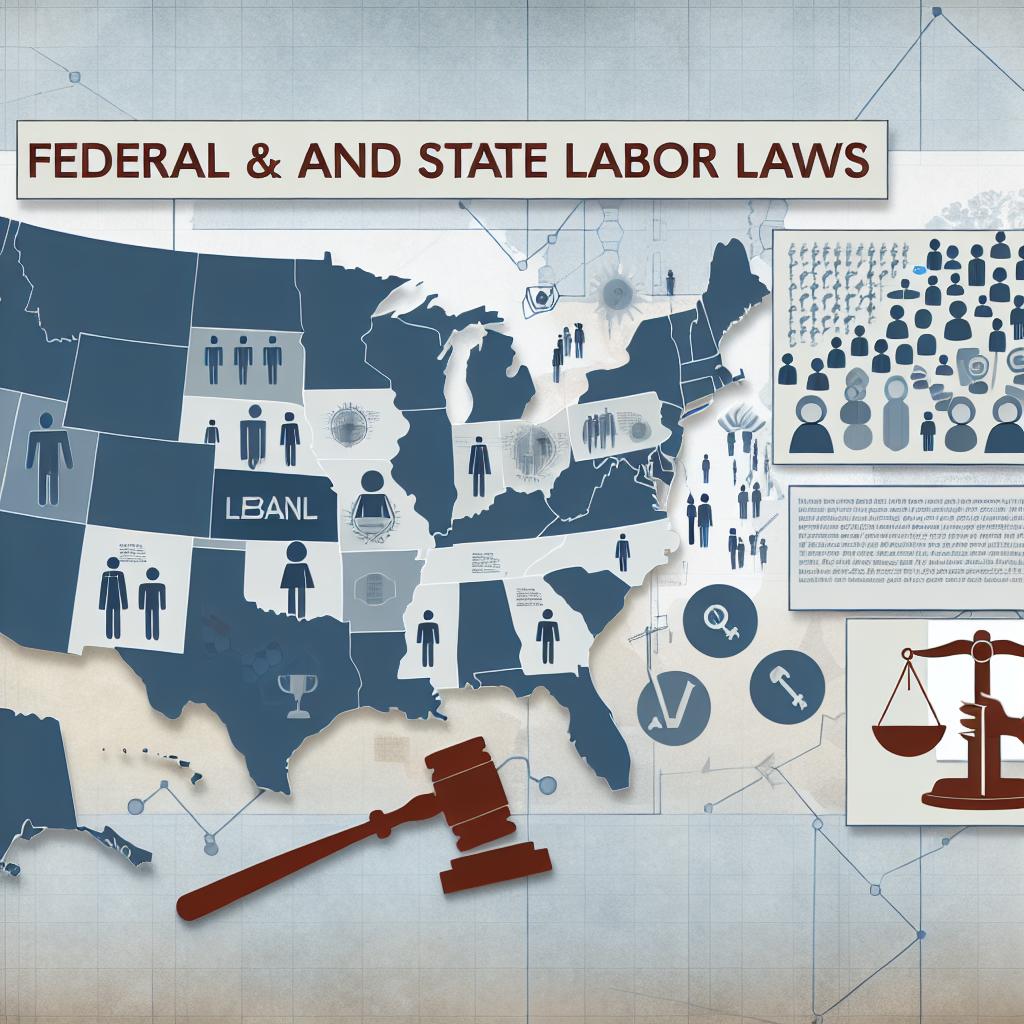
Understanding Federal and State Labor Laws
Understanding Federal and State Labor Laws
Labor laws in the United States create a comprehensive framework of federal and state regulations that orchestrate the employer-employee relationship. These regulations aim to guarantee fair treatment, safe working conditions, and equitable remuneration for employees. Simultaneously, they safeguard the rights and interests of employers. It is critical for both employers and employees to have an understanding of these laws to proficiently navigate the intricacies of the workplace.
Federal Labor Laws
The federal government has established labor laws that are applied consistently across the United States. These laws are enforced primarily by the U.S. Department of Labor. Some of the fundamental federal labor laws include major statutes such as:
Fair Labor Standards Act (FLSA)
The FLSA is essential in setting out standards for minimum wage, overtime pay, recordkeeping, and child labor. It ensures a foundational level of protection for the majority of employees, providing them a baseline for fair labor practices across various industries.
Minimum Wage: The FLSA establishes a federal minimum wage, which is the lowest permissible amount of hourly pay. All employers covered under the FLSA are mandated to pay their employees at least this rate or any higher state-mandated rate.
Overtime Pay: The act dictates that eligible employees receive one and a half times their regular rate of pay for any hours worked beyond 40 in a workweek.
Child Labor Restrictions: These provisions restrict the types of jobs that minors can perform and the hours they are permitted to work, aiming to protect young workers.
Occupational Safety and Health Act (OSHA)
Enacted to ensure safe workplace conditions, OSHA requires compliance with specific safety and health standards. The act also authorizes the inspection of workplaces to enforce these standards, thus promoting a culture of safety awareness among employers and employees.
The compliance emphasis is on preventive measures, which obligate employers to minimize workplace hazards and implement safety training for their employees. By establishing mandatory health and safety protocols, OSHA plays an essential role in reducing workplace accidents and health hazards.
Family and Medical Leave Act (FMLA)
Through the FMLA, eligible employees are entitled to take up to 12 weeks of unpaid leave per year for specific family and medical situations. This leave is job-protected, meaning employees are entitled to return to their job or an equivalent one after the leave.
Reasons for FMLA leave can include the birth or adoption of a child, a serious health condition affecting the employee or an immediate family member, or exigencies arising from a family member’s military service. The act enables employees to balance personal and professional obligations without risking their employment status.
State Labor Laws
State labor laws can offer more stringent protections or impose unique requirements beyond the federal standard. Each state has a dedicated agency tasked with the implementation and regulation of these laws. Examples of state-specific labor legislation include:
Minimum Wage
The federal government sets a baseline minimum wage; however, numerous states adjust this rate higher to match the regional cost of living. These adjustments provide greater financial stability for workers and reflect the state’s economic conditions.
When a state’s minimum wage exceeds the federal rate, employers in that state are required to pay the state-determined minimum to their employees.
Paid Sick Leave
Certain states enact legislation mandating paid sick leave, permitting employees to attend to health concerns without forfeiting income. The particulars of these laws can differ substantially, such as the amount of leave granted and the rate of pay during such leave.
This provision ensures employees do not attend work while ill, thereby promoting a healthier work environment and reducing overall public health risks.
Workplace Harassment Protections
Some state laws extend beyond federal mandates to fortify protections against workplace harassment and discrimination. This can encompass different classes or broader circumstances than those recognized at the federal level.
State laws may include more comprehensive definitions of harassment and may offer additional resources or protections for victims, thus fostering a more inclusive and respectful workplace culture.
Intersection of Federal and State Laws
When federal and state labor laws both pertain to an employment situation, employees gain from whichever law provides more extensive protections. A quintessential instance is when a state law mandates a higher minimum wage than the federal requirement; in such cases, employers must adhere to the state’s regulations.
Understanding this interaction is crucial for ensuring compliance. Employers must evaluate both sets of laws thoroughly to determine their specific obligations.
Compliance and Enforcement
Employers are accountable for remaining informed about the evolving landscape of both federal and state labor laws to ensure their practices are compliant. Noncompliance could trigger substantial penalties, litigation, and damage to an organization’s reputation.
Employees who suspect their rights have been breached can initiate a complaint with the pertinent federal or state agency. These cases are investigated and, if violations are found, organizations may face remedial action or penalties.
Conclusion
A robust understanding of federal and state labor laws is instrumental in establishing a fair and secure workplace. Both employers and employees bear the responsibility of staying informed about how these laws shape their rights and responsibilities. For further information and resources, individuals can consult the U.S. Department of Labor or specific state labor department websites.


